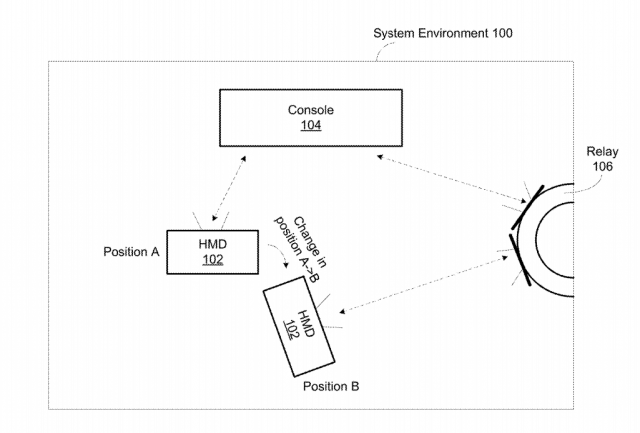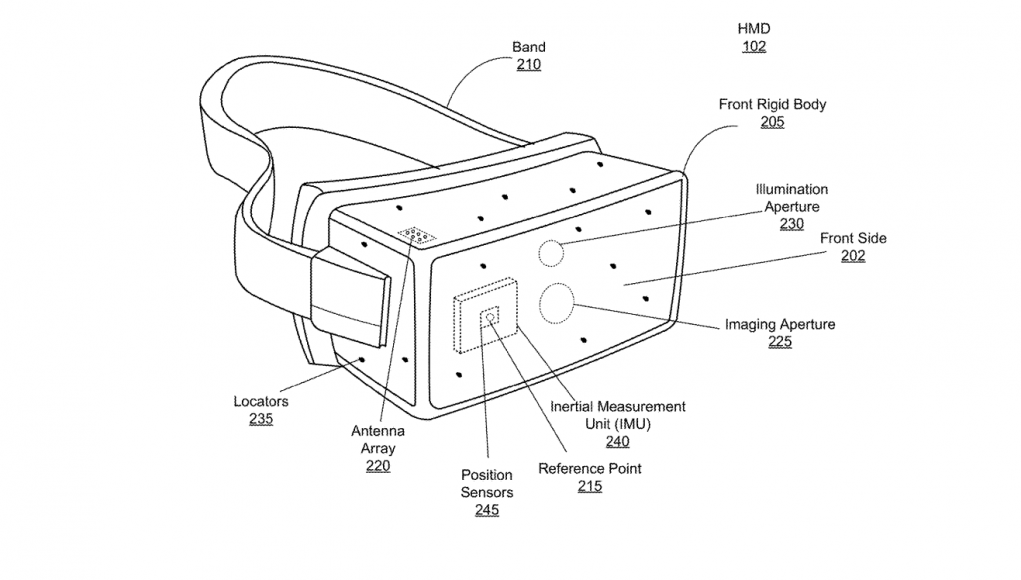In a patent issued this week to Oculus, the company describes a wireless relay system designed to prevent loss of signal even when a user is out of range of the primary transmitter and receiver.
Spotted by Redditor valdovas, the document specifically seeks to patent a calibration process on the wireless relay which aims to eliminate feedback in the connections between the headset and the relay, and the relay to the host device. The patent was filed earlier this year and granted this week to Facebook Technologies, LLC, which was formerly Oculus VR, LLC.
The patent describes with surprising clarity a wireless system designed for VR/AR headsets using 60GHz transmissions, and the problem therein:
A base station (e.g., console) that wireless communicates with a client (e.g., HMD) based on 60 GHz carrier frequency employs beam forming to compensate for a path loos and maintain a quality of wireless link above a predetermined threshold value. In some scenarios, the range of the console is limited such that a high quality wireless link cannot be formed or maintained if the HMD moves out of range. Since many VR, AR, and MR systems rely on an experience where a wearer of the HMD can freely move in a large area, the loss or degraded quality of the wireless link makes for a choppy and undesirable user experience.
A solution to this issue, as described by the patent, involves using a “relay” device which can form a strong connection between the headset and the host device (called a “console” in the patent) when the connection directly from the headset to the console is lacking. You can think of it much like a WiFi range extender which can act as an intermediary between your wireless device and your router. In the case of this patent however, the usage seems to be more about line-of-site issues (which is especially critical for 60GHz transmissions) than range specifically.
 But the document doesn’t appear to be attempting to claiming patent rights to this entire setup, rather it focuses on an ongoing calibration process happening within the relay to reduce interference:
But the document doesn’t appear to be attempting to claiming patent rights to this entire setup, rather it focuses on an ongoing calibration process happening within the relay to reduce interference:
The relay includes two antenna arrays: one configured to communicate with the HMD and the other configured to communicate with the console. As a consequence of these antenna arrays being proximally located, there is undesirably feedback between the two antenna arrays. A calibration module in the relay iteratively adjusts a noise reduction parameter until the effects of the undesirable feedback are eliminated.
As ever, it’s worth pointing out that large companies like Facebook file hundreds if not thousands of patents each year as a strategic exercise; there’s no telling whether or not something described in a patent will manifest in a product. However, this is a clear indication that Oculus has spent time and money thinking about what a wireless system for the Rift or another headset might look like.







